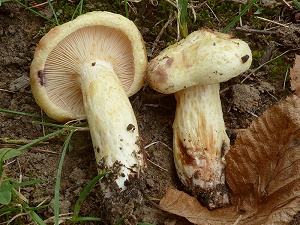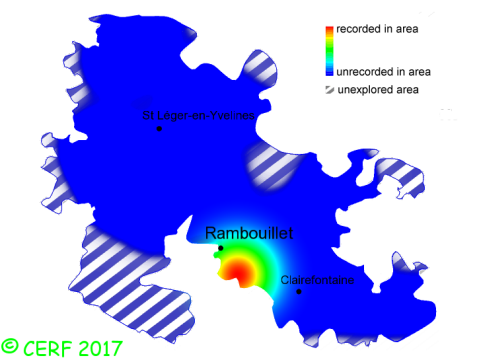| Lactarius flavidus Boud. |
|
|
|
|
|
|
The cap is cream yellowish to straw yellow, stained with violet in wounds, convex flattened then depressed; its margin is smooth, incurved. The cap surface is with faint concentric bands, a bit viscid. The stem is same colour as cap or paler, viscous, stained with violet in wounds, without ring. The flesh is creamy-white to yellowish, turning violet in 5 mns when exposed to air; its taste is slightly bitter then hot after a few seconds; the odour is faint, of fruit or shield bug; its texture is grainy (breaking like a chalk stick), exuding when cut a white milk, turning purple in 15 mns. The gills are whitish to cream, purple in bruises, adnexed to decurrent, crowded . The spore print is white. This species is mycorrhizal. It grows on the ground, in broad-leaved woods, on a rather clayey-calcareous soil, most of the time with oak, beech. The fruiting period takes place from July to November.
Chemical tests : none. Distinctive features : entirely creamy-yellow, stained with purple in bruises; milk and flesh with pungent taste, turning purple in 15 mns when exposed to air; on clay-calcareous soil Lactarius flavidus is quite rare and confined in the forest of Rambouillet, and is quite rare, more generally speaking . | ||
|
page updated on 14/01/18

